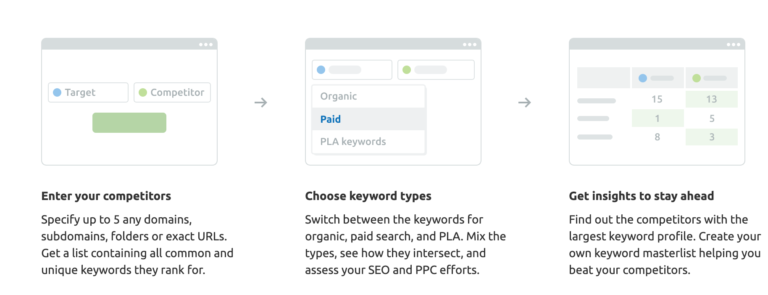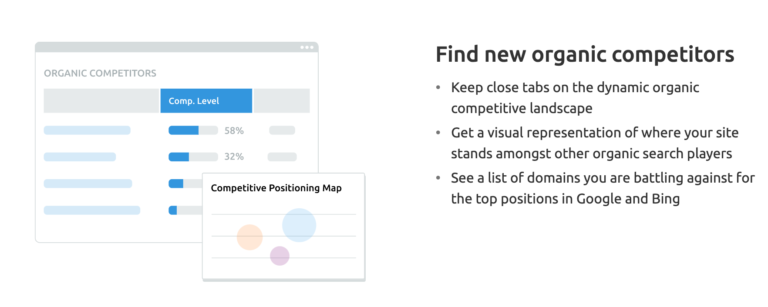Marketers considering an SEO initiative have a seemingly neverending list of on-site and off-site optimization tactics and tasks to perform based on an overwhelming amount of data.
With limited resources, it’s important to focus your attention on those items which will provide the biggest return on your investment of time and resources.
One way to establish such a focus is to first conduct a SWOT analysis of your web presence to identify areas of priority from keyword, content, technical, linking, and competitive perspectives.
A comprehensive SWOT for SEO provides a roadmap against which tasks can systematically be tackled.
While keyword research should never stop, we could devote an entire SWOT analysis just to keywords. For the purposes of a broader SEO view, we’ll assume the analysis here is based on a well-defined set of target keywords established for a specific point in time.
Determining Your SEO Strengths
One of the primary factors search engines use in determining your organic search visibility is your relative strength and authority for a topical group of keywords.
Advertisement
Continue Reading Below
Identifying those keywords for which you already have some level of authority in the eyes of the search engines—your momentum, in other words—is an excellent place to focus your attention.
Authority is generally difficult to come by and takes time to establish, so why not build on what you already have?
Your first question should be, “Which pieces of content do I have that rank well (let’s say in the top 20 results) for my primary keyword groups?”
Recognizing where you have existing strength can be leveraged in three ways:
- Look for opportunities to link out from or to your strongest pieces of content, which can have the dual effect of reinforcing your strong content by providing more comprehensive answers to your audiences’ questions and piggybacking on the authority of the strong piece.
- Perform full-page keyword, technical and link audits on all of the web pages which rank between positions 5 and 20 to see where any improvements can be made.
- Determine whether or not the “right” landing pages are ranking for the keywords for which you want to be found. While it may seem great to have your homepage rank for several of your keywords, this is not optimal as searchers will likely have to spend more time clicking and searching to find the answer to their question. Determine which of your pages really provides the best answer and focus on having it usurp the position currently maintained by the homepage.
Be sure to pay attention, too, to the types and characteristics of your strongest content as signals to what content to create moving forward.
For example, if you have videos ranking well in Google and/or YouTube, by all means, create more videos.
Advertisement
Continue Reading Below
If long-form blog posts dominate the top of the search results, this is your cue to publish more of the same.
Identifying Your Search Weaknesses
We all have our weaknesses. When it comes to SEO, recognizing and admitting them early on can save us a great deal of effort, time, and money.
Keywords & Content
While there are undoubtedly keyword groups that seem essential, it’s important to let go of those that require too much time and/or effort.
Generally, a quick review of the search engine results will reveal keywords that are out of reach based on your competitors’ size, age, reputation, and quality of content.
In this case, it may be necessary to look at more specific long-tail keyword alternatives or consider other avenues (including paid) to generate visibility, traffic, and conversions.
Technical SEO
Another area of weakness, which you can more readily control, may be the quality of your own content from a technical/structural, keyword relevance, or depth perspective.
Begin the process of identifying areas of weakness by conducting a website audit.
There are several excellent tools available, including Google Lighthouse and Search Console (specifically the Core Web Vitals Report and Mobile-Friendly Test), which will provide a prioritized list of issues and/or errors found in tags, links, code, keywords, and a myriad of mobile-friendly factors.
As noted above, you should start by focusing and fixing any issues found on those pages for which you already have some level of authority based on search engine results.
You can then move onto other priority web pages based on website analytics data or strategic importance.
Backlinks
Organically obtained, relevant, high-quality backlinks (aka inbound links) are still very much a search engine ranking factor as they speak to and can enhance the authority of the site to which they link.
As with keyword research, there are a number of good third-party backlink tools that can reveal where you maintain backlinks. These are particularly useful for looking at the backlink sources of your strongest known competitors.
Advertisement
Continue Reading Below
Where appropriate, you may want to consider reaching out to obtain links from the same sources.
Capitalizing on SEO Opportunities
Opportunities abound in search for those who know where to look.
Keywords & Content
Several keyword research tools including ahrefs and SEMrush offer the ability to discover both keyword and content opportunities or gaps based on providing your website domain, the domains of your known competitors, or a targeted list of keywords.
Most provide prioritized lists of potentially high-value keywords based on estimated monthly search volumes, organic traffic, and/or relative competition.
Which high-value keywords are your competitors ranking for which you are not?
As with the weaknesses above, part of this analysis should include consideration for the level of effort required to obtain authority relative to the potential return on establishing organic visibility.
Is it a worthwhile opportunity?


A more manual process for discovering keyword and content opportunities is to run a reverse website audit on your competitors’ sites.
Advertisement
Continue Reading Below
Or, simply spend some time reviewing their primary pages and pay particular attention to the keywords they are using in their title tags, headings, and internal links.
However, beware that this strategy assumes your competition has been following SEO best practices themselves, which may or may not be the case.
High-Quality Backlinks
While typically a manually intensive process, there is long-term value in seeking out these types of backlinks.
There are three primary sources you can use to start looking for inbound links:
- Search engine results for the keywords you want to be found for are a natural starting point as the websites found here are considered “relevant” to the search engines by definition. Of particular interest are those sites that rank ahead of yours, perhaps because they have higher authority upon which you can piggyback. Look for any non-competitive backlinking opportunities such as directories, association listings, or articles and blog posts you may be able to contribute to or comment on.
- The Google Search Console Links Report is the next best resource for backlink research as it indicates what Google recognizes as the domains linking to your content. Here, you can validate the quality and accuracy of the links you already have as well as determine if there are any other opportunities to obtain additional links from these same domains.
- As noted under Weaknesses, there are several third-party backlink tools that can be used to identify potential backlink sources where links to your competitors can be found. Some will even help by authority ranking and prioritizing the value of each existing and potential source, which can save significant time.
Know Your Threats in Search
Whether done intentionally or not, there are a few things that can threaten your organic authority in the eyes of the search engines and should be prioritized to avoid potentially damaging penalties.
Content
The primary content threat most are familiar with is duplicate content which, as the name suggests, is content republished on your website without proper attribution to the original source.
Advertisement
Continue Reading Below
In order to avoid being penalized for using this type of content, you must be sure to include canonical tags referencing source content in the headers of pages containing the duplicate content.
Backlinks
While relevant, high-quality backlinks can help boost your authority, irrelevant, low-quality inbound links from non-reputable sites can do significant harm.
This is particularly true of those that are part of paid link schemes, which can do long-lasting harm and even get you tagged with a manual penalty resulting in lost organic visibility and traffic.
Recovering from a manual penalty is not an easy or quick process.
Simply put, you should not pay for backlinks and ensure any backlinks you acquire have not been purchased on your behalf by a third party without your knowledge.
As such, you should review the Google Search Console Links report regularly for questionable domains or those you don’t recognize as relevant.
Competitors
Even if you maintain strong organic visibility and traffic relative to your “known” competitors, there is always the potential for new, aggressive, or unknown competitors to come onto the scene.
Advertisement
Continue Reading Below
The search engines love and reward fresh, relevant content. As such, you should regularly monitor the search engine results for new entrants, which may, over time, challenge your authority and position.
Of course, the best way to combat this type of threat is by continuing to publish and update your own comprehensive content, which will give the search engines less reason to question your authority.


Time to Focus & Take Action
So now, with your SEO SWOT analysis and data in hand, you’re ready to get to work addressing the issues you’ve identified or taking advantage of opportunities to build on your authority in order to advance your organic visibility, drive more traffic and revenue.
Advertisement
Continue Reading Below
Be sure to revisit your SWOT on a quarterly or semi-annual basis along with the organic metrics against which you will measure success.
More Resources:
Image Credits
All screenshots taken by author, February 2021

You must be logged in to post a comment.